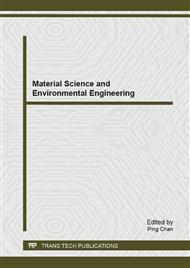p.531
p.537
p.543
p.548
p.554
p.559
p.565
p.571
p.578
Effects of Grazing on Reproductive Allocation of Elm in Horqin Sandy Land, Northeastern China
Abstract:
Grazing, one of the most important disturbance in Northern China, influenced vegetation restoration on the aspects of population survival, community structure and landscape patterns. However, effects of grazing on elm trees (Ulmus pumila), the key species in climax community in Horqin Sandy Land, were not fully understood, especially on the aspects of reproductive allocation. Reproductive allocation was vital to affect seed production, which determined the number of seed source used for recruitment. Furthermore, recruitment regulated the population dynamic even to the community structure. To estimate effects of grazing on elm trees reproductive allocation, a field experiment was conducted in Wulanaodu, southern of Horqin Sandy Land. Elm trees suffering grazing with intensities were classified with diameter in breast (DBH). Current-year shoots, leaves and seeds in each tree mentioned above, were selected and measured in the laboratory respectively. The dry weight of them considered as biomass allocated to reproductive and vegetative growth. Our results showed that the reproductive allocation of early-matured and over-matured trees were 25.17% and 35.91% separately in closed land and were 42.48% and 60.03% in light grazed land correspondingly, indicating the reproductive allocation of early-matured and over-matured trees in closed land was significant lower than in grazed land (P<0.05). Meanwhile, matured trees devoted 71.15% of required resource to reproduction in closed land, and this ratio was 67.34% and 71.75% in light and heavy-grazed land, indicating the difference of reproductive allocation was not significant between the grazed and closed lands (P>0.05). Furthermore, matured trees devoted 71.75% of resource to seeds and the corresponding ratio was 60.03% and 42.48% in over-matured trees and early-matured trees, indicating matured trees significantly devoted more resource to reproduction than over-matured trees and early-matured trees (P<0.05). It is suggested that grazing improved the ratio of biomass allocation to reproduction.
Info:
Periodical:
Pages:
554-558
Citation:
Online since:
May 2014
Authors:
Keywords:
Price:
Сopyright:
© 2014 Trans Tech Publications Ltd. All Rights Reserved
Share:
Citation:


